The cause of many diseases, poor health is infection with helminths. Various worms can enter the human body. Their sizes vary from the smallest millimeters to 16-18 meters. Parasitizing in all organs and tissues, they cause enormous harm to health. To protect yourself from invasion (infection), it is desirable to know what worms are, and to understand how you can become infected with parasites of each species.
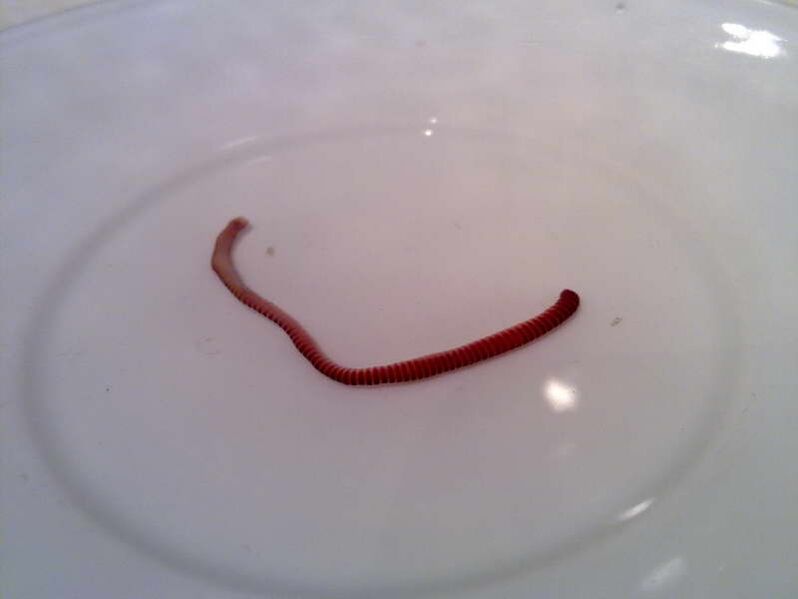
Types of worms - what parasites live in the human body
Depending on the place of parasitism in the body and the characteristics of infection, parasites are divided into several classes.
Classification of worms depending on the location in the human body:
- Intestinal- These are worms that live in the gastrointestinal tract, mainly in the small intestine. Sometimes they penetrate into other organs. This group includes tape and round worms.
- extraintestinal- develop, live and multiply in different organs outside the intestines. They can be localized in the lungs, eyes, brain, liver. This group includes flatworms.

Classification of worms depending on the method of entry into the human body:
- contagious- are transmitted to a healthy person from an infected person during contact. Another source of infection is household items: towels, toys. Representatives of this species are dwarf tapeworm, pinworms.
- Biohelminthiases- are transmitted through contact with an animal, as a result of the consumption of infected meat that has not undergone sufficient heat treatment. To become potentially dangerous to humans, these parasites must live for a certain period in the body of an animal that is an intermediate host. This species includes bovine and pork tapeworms.
- Geohelminthiases- part of the life cycle is carried out in the human body, and part - in the soil. This is a necessary condition for their development. You can get infected through poorly washed vegetables and fruits. This group includes roundworms, trichines.
Depending on the biological characteristics, helminths are divided into three types - round, tapeworms, as well as flukes.
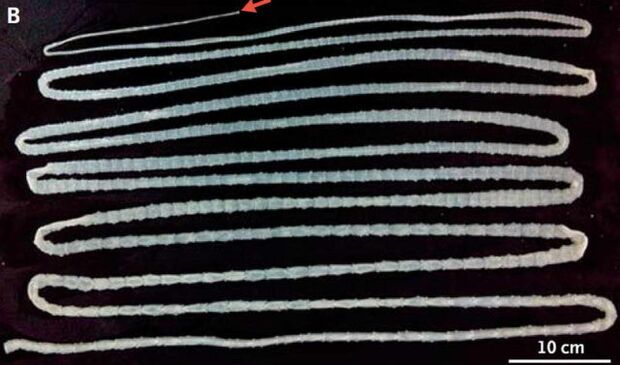
Roundworms (nematodes)
Roundworms are called so because their bodies are round in cross section. These parasites are most often found in the body of a child. This type includes:
- PinwormsThey parasitize in the large and small intestines. Their body length does not exceed 1 cm. Most often, helminthic invasion by pinworms affects children. These parasites live 1-2 months. If you strictly observe personal hygiene, you can recover even without taking medication. If it is not observed, re-infection is possible.
- Roundworm- worms up to 45 cm long, which parasitize in the small intestine. They can move freely inside the intestines. Their life expectancy is 14 months. During this period, they release toxins into the blood, systematically poisoning the body.
- Vlasoglav- worms, whose body length is 3-4 cm. They parasitize in the large and caecum, digging into their mucous membrane to suck blood. Very toxic. Live up to 5 years.
- Trichinella- a parasite with a valley of 3–4 mm, which can be infected through meat that has undergone insufficient heat treatment. Helminths live in different organs, settling in the muscles of the eyes, heart, and lungs. Life expectancy - up to 2 years.
- hookworm and necator- have the same biological characteristics, development cycle and method of parasitism, therefore they are combined under the same name "hookworms". These helminths 10–15 mm long are localized in the duodenum 12. Penetrate into the human body through the skin upon contact with contaminated soil. They feed on blood by biting through blood vessels, which leads to iron deficiency anemia. This parasite is difficult to identify.
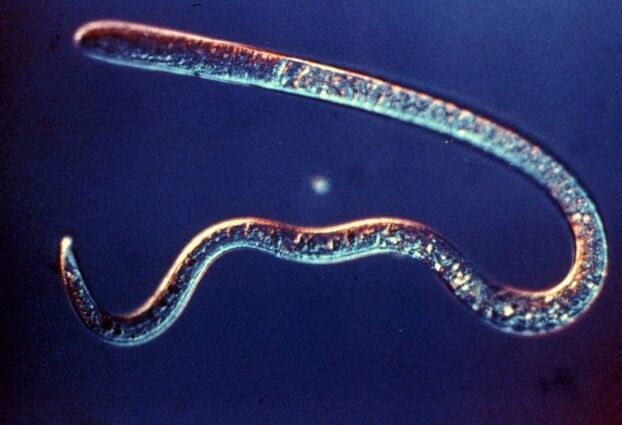
Tapeworms (cestodes)
The tapeworm has a flat body that is divided into segments. As the worm grows, the segments separate from the body and pass out with the feces. These ribbon-like individuals are up to 20 m in length. They parasitize in the intestines, where it attaches to its walls with the help of suckers.
To infect humans, tapeworms must go through one of the stages of development in the body of an animal.
These parasites live in the body for years. Members of this group:
- wide ribbon- reaches a length of up to 20 m. It parasitizes in the small intestine, causing severe dysfunction of the digestive tract. You can become infected by eating the meat of freshwater fish and crayfish that have not undergone heat treatment.
- Bull tapeworm- a helminth 6–12 m long. Lives in the small intestine, attached by suction cups to its mucous membrane. The source of infection is beef meat that has not undergone proper heat treatment.
- Pork tapeworm- a parasite up to 2 m long, which enters the body through raw or poorly processed pork. Attaches to the walls of the small intestine.
- Echinococcus- a parasite that can be infected from cats, dogs. A person is an intermediate host for this helminth, therefore, getting into the body, the larvae penetrate into tissues, into any organs and form echinococcal cysts. They are removed exclusively by surgery.
- Alveococcus- a type of echinococcus. Very dangerous helminths that can live in any organs, but mainly parasitize in the liver. They actively grow and develop according to the principle of cancer metastases, gradually infecting the entire body. The worms can be removed surgically.
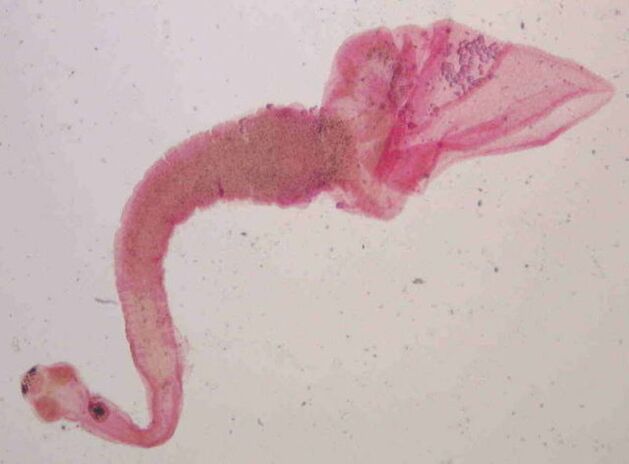
Flukes (trematodes)
Flukes are a type of worm that parasitizes in any organs and tissues. They feed on epithelial cells. They reach a length of 1. 5 m. The body is shaped like a leaf. The route of infection is the consumption of raw fish, seafood or after insufficient heat treatment. This type includes:
- liver fluke- a worm 7–20 mm long. It parasitizes in the liver and bile ducts. It provokes the development of serious diseases and functional disorders.
- Fluke- a worm 4-13 mm long, localized in the gallbladder.
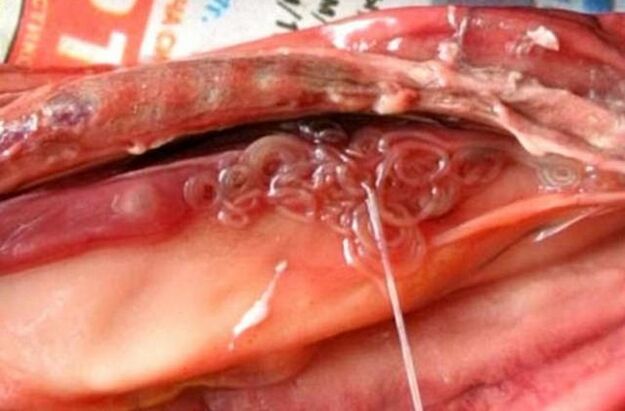
Symptoms - signs of worms in humans
How exactly helminthiasis manifests itself depends on the type of worms that have affected the body, and on their number. The main symptoms of helminthic invasion:
- diarrhea or constipation;
- bloating, flatulence;
- pain in muscles and joints;
- anemia;
- allergic reactions;
- dermatitis;
- weight problems - weight loss or obesity;
- sleep disturbance;
- nervousness, irritability, depression;
- apathy, fatigue;
- cough, inflammation of the respiratory tract;
- weakened immunity.

How to determine if there are worms
If symptoms appear that may indicate the presence of worms, it is worth undergoing a diagnosis. The following tests will help identify parasites:
- Study of feces.
- Blood test.
- Examination of the secrets of the duodenum 12.
- Analysis of perianal and rectal mucus.
- Ultrasound, tomography, endoscopy.
You can be sure of the result of the diagnosis if you pass the analysis 3-4 times with an interval of several days. One analysis is not enough to confirm the absence of helminthic invasion.
The human body can affect one type of worms or several at once. All of them, regardless of size, provoke serious health problems, are the causative agents of complex chronic diseases that cannot be cured for years. To eliminate the risk of infection, it is necessary to periodically conduct diagnostics and preventive treatment. This is especially true for pet owners.






































